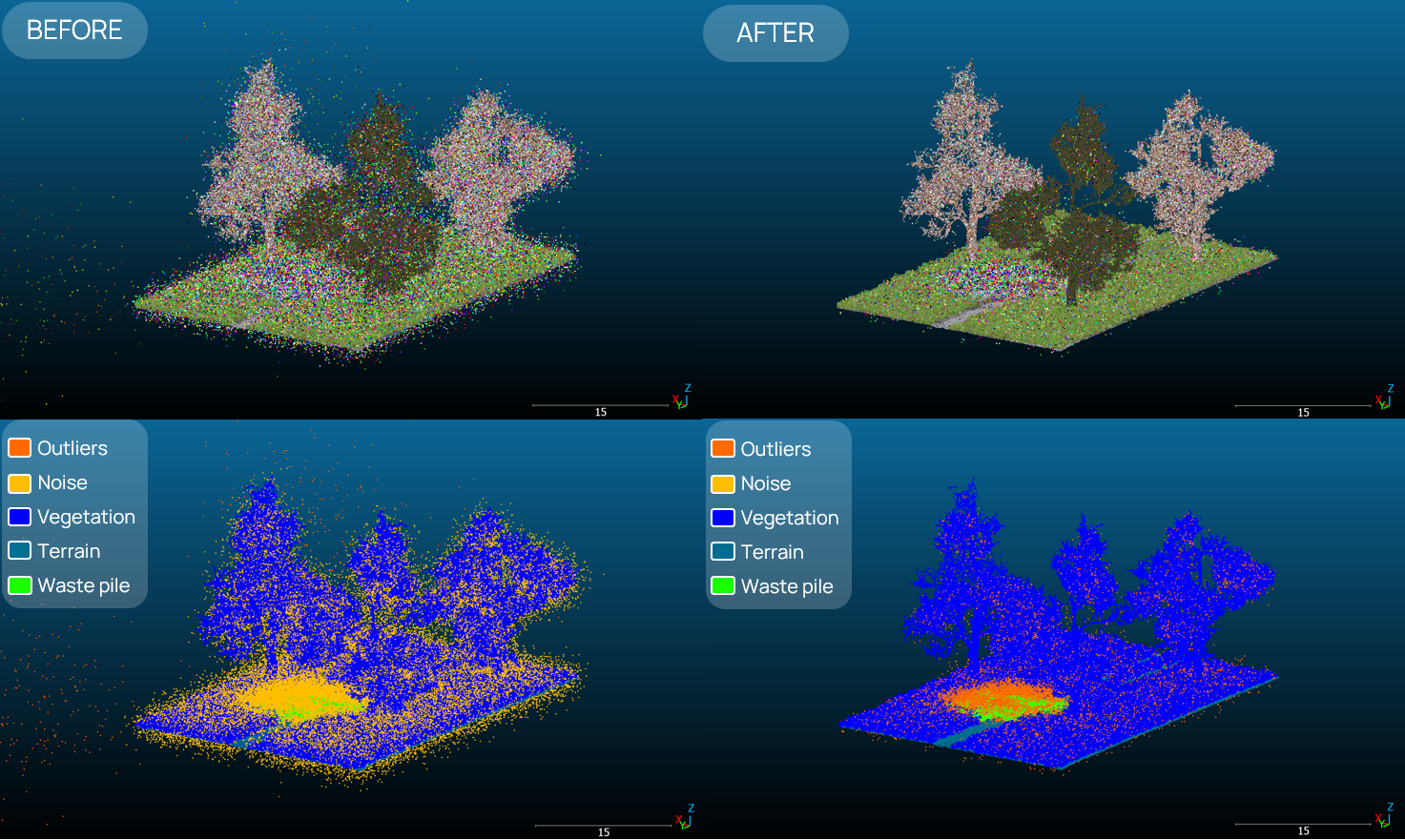Improving Illegal Landfills Detection

The thesis project was performed by Mirko Calcaterra and Emma Lodetti.
These are Mirko’s comments about his thesis work:
“My master’s thesis focused on improving the analysis of illegal landfills by processing 6D Point Clouds obtained from passive (cameras) and active (Lidar) sensors. The key phases of the project included outliers detection, denoising, and occlusion removal (vegetation), which hinder waste detection and volume estimation.
This thesis (developed with another Geoinformatics student) contributed to the European project PERIVALLON, aiming to identify illegal landfills caused by environmental crimes related to pollution and waste dumping.
From my point of view, this work was possible thanks to my Supervisor Giacomo Boracchi (DEIB) and to the following courses I followed during the master:
- Software Engineering for Geoinformatics. This course strengthened my Python programming skills, which proved fundamental throughout my research process.
- Computing Infrastructures. Here, I gained crucial understanding of server operations and their significance in executing complex deep learning algorithms efficiently.
- Artificial Neural Network and Deep Learning. This is one of the cornerstones of the thesis and one of the courses I loved the most during the master’s program. It introduced me to the algorithmic foundations of the “AI revolution” and was instrumental in developing the second phase of my thesis.
- Geoinformatics Project.This course allowed me to explore my academic interests in depth. It provided my first opportunity to develop a comprehensive research project—from literature review and problem formulation to methodology development and results analysis—enhancing my ability to communicate the significance of my work.
- Photogrammetry and Drone Surveying. The knowledge gained here enabled me to design effective surveys, generate point clouds from imagery (with a thorough understanding of the underlying processes), and master various techniques that proved essential both for my thesis and beyond.
This thesis represents a distinctive collaboration between two departments at Politecnico, demonstrating the remarkable interdisciplinary potential of our institution’s research ecosystem. Rather than being an isolated example, this work illustrates just one of many possible applications emerging from our Master’s program. This research exemplifies how our academic framework equips students to address complex challenges through integrated knowledge by bridging diverse technical domains and methodologies. The synergy achieved here is an invitation for future students to explore similarly transformative research pathways.”